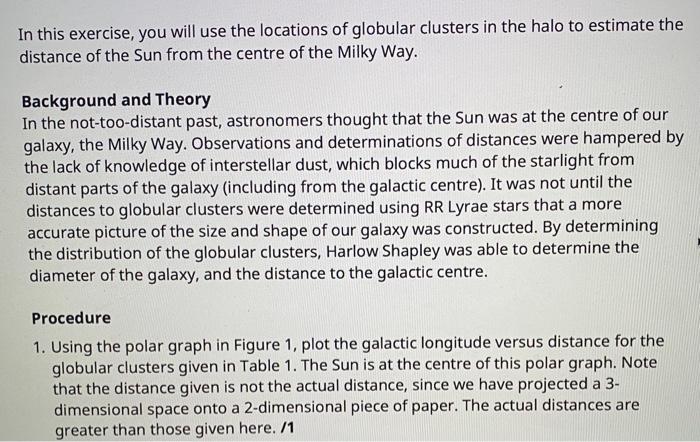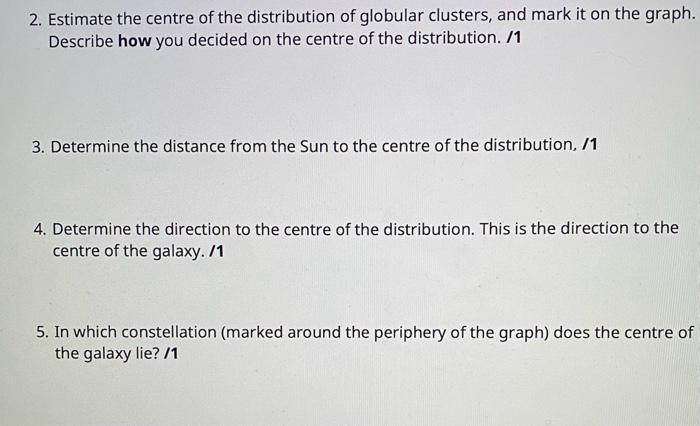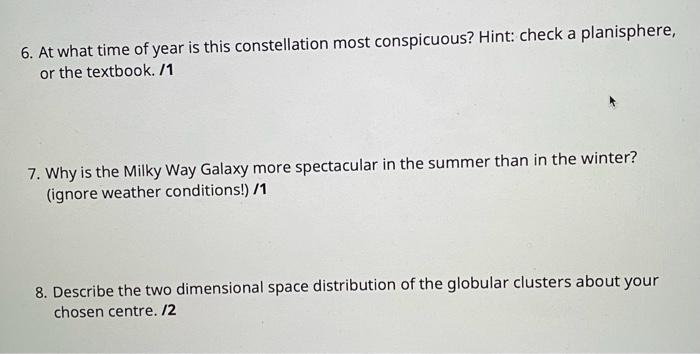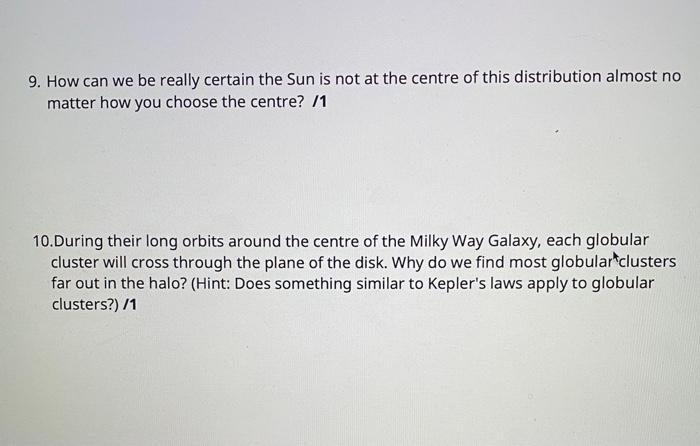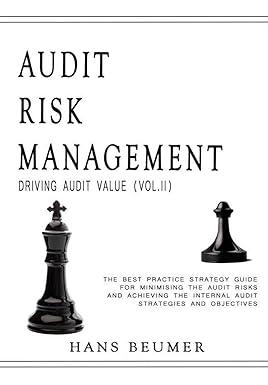In this exercise, you will use the locations of globular clusters in the halo to estimate the distance of the Sun from the centre of the Milky Way. Background and Theory In the not-too-distant past, astronomers thought that the Sun was at the centre of our galaxy, the Milky Way. Observations and determinations of distances were hampered by the lack of knowledge of interstellar dust, which blocks much of the starlight from distant parts of the galaxy (including from the galactic centre). It was not until the distances to globular clusters were determined using RR Lyrae stars that a more accurate picture of the size and shape of our galaxy was constructed. By determining the distribution of the globular clusters, Harlow Shapley was able to determine the diameter of the galaxy, and the distance to the galactic centre. Procedure 1. Using the polar graph in Figure 1, plot the galactic longitude versus distance for the globular clusters given in Table 1. The Sun is at the centre of this polar graph. Note that the distance given is not the actual distance, since we have projected a 3 dimensional space onto a 2-dimensional piece of paper. The actual distances are greater than those given here. /1 2. Estimate the centre of the distribution of globular clusters, and mark it on the graph. Describe how you decided on the centre of the distribution. /1 3. Determine the distance from the Sun to the centre of the distribution, /1 4. Determine the direction to the centre of the distribution. This is the direction to the centre of the galaxy. /1 5. In which constellation (marked around the periphery of the graph) does the centre of the galaxy lie? /1 6. At what time of year is this constellation most conspicuous? Hint: check a planisphere, or the textbook. /1 7. Why is the Milky Way Galaxy more spectacular in the summer than in the winter? (ignore weather conditions!) /1 8. Describe the two dimensional space distribution of the globular clusters about your chosen centre. /2 9. How can we be really certain the Sun is not at the centre of this distribution almost no matter how you choose the centre? /1 10.During their long orbits around the centre of the Milky Way Galaxy, each globular cluster will cross through the plane of the disk. Why do we find most globulart clusters far out in the halo? (Hint: Does something similar to Kepler's laws apply to globular clusters?) /1
